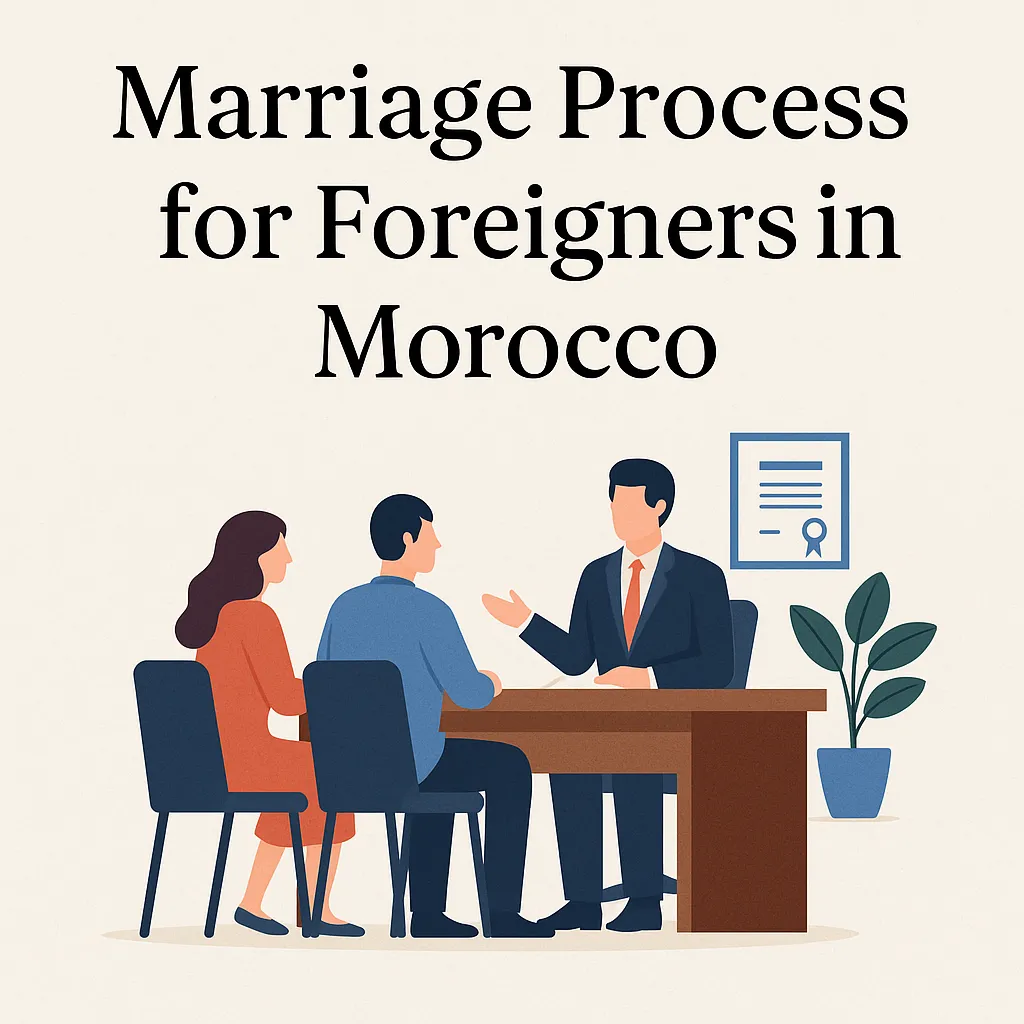
Introduction
Morocco is not only a land of rich culture and history, but also a popular destination for international couples looking to get married. However, before planning your wedding, it’s crucial to understand the marriage Morocco requirements to avoid delays or legal issues. This guide will walk you through everything you need to know to legally marry in Morocco.
Who Can Get Married in Morocco?
Marriage in Morocco is open to both:
- Moroccan citizens,
- Foreign nationals,
- Mixed couples (one Moroccan and one foreigner).
However, the legal process varies depending on the nationality and religion of the spouses.
Legal Marriage Morocco Requirements
1. Minimum Age
- Both spouses must be at least 18 years old.
- In rare cases, judicial exceptions are granted for younger individuals.
2. Marital Status
- Both partners must be single, divorced, or widowed.
- Proof of civil status is mandatory (certificate of celibacy, divorce judgment, or death certificate of former spouse).
3. Religion Requirements
- A Muslim woman cannot legally marry a non-Muslim man in Morocco unless he converts to Islam.
- A Muslim man may marry a non-Muslim woman (Christian or Jewish) without conversion.
Required Documents for Marriage in Morocco
Here is a list of common documents required for foreign nationals and mixed couples:
For the Foreign Spouse:
- Passport copy (certified)
- Birth certificate (less than 6 months old)
- Certificate of celibacy or marital status
- Police clearance certificate or criminal record (Casier judiciaire)
- Medical certificate for marriage
- Proof of income or employment
- Residence certificate (if living in Morocco)
For the Moroccan Spouse:
- National ID card (CIN)
- Birth certificate (Copie intégrale)
- Family record book (livret de famille)
- Medical certificate
- Certificate of celibacy (if never married)
Note: All foreign documents must be translated into Arabic or French and legalized/apostilled in the country of origin and at the Moroccan consulate.
The Marriage Procedure in Morocco
The marriage procedure includes the following steps:
Step 1: Collect and Legalize All Documents
Foreign documents must be legalized and translated before being used in Moroccan legal processes.
Step 2: Submit the File to the Moroccan Family Court
The judge (Adoul) must approve your file. A court date may be scheduled for an interview.
Step 3: Judicial Authorization
For mixed marriages or where one party is foreign, a judge’s authorization is often required.
Step 4: Marriage Contract
Once authorized, the Adoul (notary) drafts the Acte de Mariage in Arabic. This document is legally binding.
Step 5: Civil Registration
The marriage must be registered at the Moroccan civil registry office (Service de l’état civil).
How Long Does It Take?
The whole process can take from 30 to 90 days, depending on:
- The completeness of the file
- Court backlog
- Translation and legalization time
Tips to Simplify the Marriage Process
- Hire a lawyer or legal consultant familiar with Moroccan marriage law.
- Begin collecting documents early.
- Double-check that all foreign documents are translated and legalized.
- Ensure no discrepancies in name spellings and dates across documents.
Why Choose Morocco for Marriage?
Besides the administrative process, Morocco offers:
- A unique mix of traditional and modern ceremonies
- Stunning wedding venues
- A culturally rich and memorable celebration
Conclusion
Understanding the marriage Morocco requirements is essential to successfully plan your union in the country. Whether you’re marrying a Moroccan or organizing a foreign wedding in Morocco, legal preparation ensures your marriage is recognized and valid.
For assistance with the marriage process, Legal Morocco offers tailored legal support and representation to help you get married in Morocco legally and without stress.
FAQ
Read Also : Marriage Process for Foreigners in Morocco
U.S. Embassy & Consulates in Morocco – Marriage in Morocco
This official guide provides comprehensive information for U.S. citizens on the marriage process in Morocco, including required documents and steps to follow.
Read more